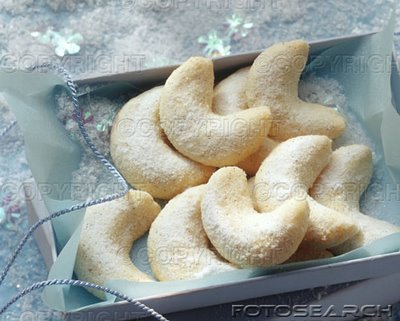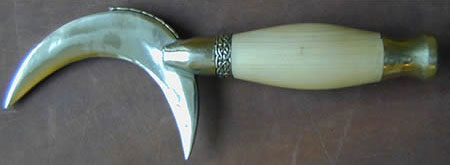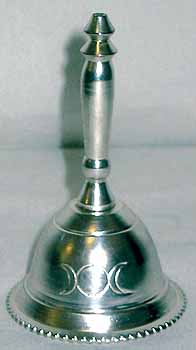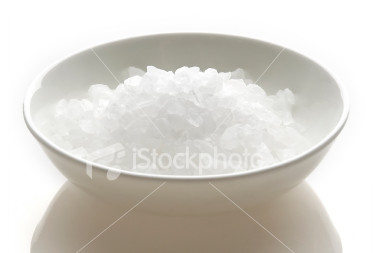Altar & Tools language=JavaScript1.1> </SCRIPT> One of the most important things to remember is that your altar is personal and private. You will find alot of information and suggestions concerning your altar, remember that it is up to you as to how you set it up. Do what is the most comfortable for you and what you feel is right. Since there has been a lot of interest lately in how to create an altar, I thought this would be a good time for a lesson on the basics of putting one together. First, you need to decide where and if you can leave a permanent altar or if you will have to put it away each time.
For a permanent altar, you can use any kind or size of table preferrably wood but it doesn't have to be. Rounded tables are easier to get around when moving around them in your circle. Some people also like to have tables that have shelves or drawers built into the bottom to hold magickal supplies. My best suggestion if you are going to buy a particular table for this is to try some of the used furniture places or even garage sales. You'd be amazed at what kind of treasures you can find there. Make it a personal choice. Be open to your inner divine voice and you will find the one just right for you.
For temporary altars, you can use your kitchen or living room tables. You could even use a board that you cover with cloth to lay in the floor. Sometimes you just have to adapt to the situation that exists in your home.
There are times when you just can't leave one out to show the world because family and friends won't be very understanding. The point is to be able to create space when you need to do that. You'll find the right way that works for you. Now that you have the altar table, you need to decide on tools and set up. It is traditional to set up an altar facing the North or East but if you need or it feels right to set up in a different direction, it is okay. You should buy you a piece of cloth of the color of your personal preference to cover your altar. You can leave it plain, decorate it, or even use different colors for particular rituals. That is something you will have to decide which is best for you. Wiccan tools...... the list can be very long or it can be very simple and short. I will give you a general idea and location that you can lay the tools on your altar. I also suggest that you go to my wicca site and read my page that gives a wide variety of tools and their descriptions on the Ritual Tools Page. You can use all of these tools or keep it simple and use only a few. This is entirely up to you and how you feel will serve you best in rituals and spells. Hereare some suggtions as to how to set up your altar:
Find a quiet space in your home where you can place your altar. If possible, have it face North.
Trust yourself and use your intuition to find the "right" place for it.
Cleanse and bless the space by sprinkling salt water, burning sage, or ringing a clear bell.
Ask the spirits of the North, East, South, and West to guard this sacred space.
Ask the Goddess and God to bless your altar space.
Place a low table or box in the spot. I use an old steamer trunk.
Cover the table with a special cloth. You get to decide what makes it special.
Place your pentacle, a stone, or a bowl of salt on the northern side of your altar. This represents Earth energy.
Place an incense burner, a feather, or your wand on the eastern side of your altar. This represents Air energy.
Place a candle or your athame at the southern side of your altar. This represents Fire energy.
Place your chalice, a seashell, or a bowl of water on the western side of your altar. This represents Water energy.
If you have statues that represent the Goddess or God, place them on the altar. You can also use candles, stones, or any other objects that feel right.
If you have any other object that you associate with your spiritual practice, find a place for it on your altar. You might add Tarot cards, Runes, your Book of Shadows, or your journal.
You have just created your altar. Enjoy it and use it well! Tips:
Feel free to improvise with your altar. It is your personal expression of your relationship with the Divine. Keep it as ornate or as simple as you like. Respect your altar as sacred space and ask others to do the same. Don't allow random objects to be placed on it.
If you live with people who are uncomfortable with paganism, you can make your altar inconspicuous by keeping it on top of your bureau. Or make your entire room an altar! The Altar, this is the center of the circle, the place that the celebration revolves around. The things that are needed are here, either on the altar, or placed underneath it, where they can be easily reached. Each of the four elements is present, both in a real and in a symbolic form. Air is present in the incense, and in the Athame. Fire is present in the incense as well, and in the wand. Water is present in it's actual form, and as the Chalice. Earth is present in the salt, and as the Pentacle. There should also be a flame on the altar, usually in the form of a candle. All that is really necessary is a representation of each of the elements and a flame; but lots of other things usually wind up there, too. Chalice  A sacred cup of glass that represents water, emotion, and fertility. They hold a verity of beverages used in rituals. They also symbolize womanhood in the symbolic Great Rite. Libation Bowl  This is the bowl the libations are poured into. It's not necessary if you are fortunate enough to be able to celebrate outside, because the wine can be poured right onto the ground, and the cakes can be tossed into the bushes for the critters. But if you are inside, it's a necessity! During the circle, all food and drink that is consumed is first shared with the Gods by putting some into this bowl; so keep that in mind when you choose one. Some witches use mini cauldrens for this item. (It's also a good idea not to look into it, if you have a great variety of food. And sometimes we add Tums for the gods.....) After the ceremony, the bowl must be emptied outside, in a ritual that we know in our tradition as "Cold Feet," because that's what you get when you go outside barefoot to do it! The bowl is raised towards the moon, and the participants, once again, give a blessing or dedication such as, "As the Gods share with us, so too do we share with the Gods," and the contents of the bowl are emptied onto the ground. However you do it, the contents should eventually wind up outside, on the Earth, to show that we realize that is where all of our food comes from, and that we are grateful. Cakes  MOON BISCUITS :
Moon Biscuits are traditionally eaten with wine during various moon
celebrations or rituals.
They are made in the shape of the crescent moon,
and the whole hazelnuts in them represent the Full Moon that is to come.
250 g / 9 oz whole wheat flour
75 g / 3 oz soft light brown sugar
175 g / 6 oz butter / margarine
A large handful of hazelnuts.
Preheat to 300F or 150C.
Beat the butter or margarine with the sugar until blended. Add the flour, and mix together to form a dough. Knead on a floured surface.
Gently work the whole hazelnuts through it, flatten out to a depth of about half an inch. If you have a moon-shaped pastry cutter, use this to form the biscuits. However, you may want to cut the moon shapes yourself with a small sharp knife. You can even add a few features, or Moon symbols, to the surface.
Place the biscuits on a baking sheet, and put in the oven until light golden brown.
These are the cakes part of "Cakes and Wine." They can be any form of goodie that the group desires, usually something reflecting the reason for the celebration. Shown here are gingerbread cookies. Traditionally, there is one for each celebrant, and one left over. (This group has six people.) The "extra" one is actually used first, and goes into the Libation Bowl, with each celebrant in turn taking one as the plate is passed. They show the fruitfulness of the Earth, and also the goodness of life. These cakes all get eaten during the blessing. If there are any left (an expected celebrant can't make it at the last minute, or an allergy is discovered) the celebrants may share them among the group, or they may be added to the libation bowl. Wine  This is a bottle of Wine (or Not Wine, i.e. sparkling fruit juice.) It's used in celebrations to toast the Gods, to pour libations, and to show the fruitfulness of the Earth. It also shows the joy that comes to each of us in this life. Although wine is recommended if the group is using a communal cup (to keep down the germs,) there are plenty of folks that cannot use it for one reason or another. For a celebration with these folks, it's perfectly acceptable to use Not Wine, although I would recommend separate cups for everyone if you do. Traditionally, there shouldn't be any wine left in the communal cup after the blessing, so the HPS (High Priestess) drinks it. If this is impractical for one reason or another, it's perfectly acceptable to empty the rest into the libation bowl. Kerfan (Boline)  Sometimes (in some traditions) known as a Boline, this is the knife that is used for actual cutting. (As opposed to the Athame, which is for symbolic and magical use only.) Traditionally, it has a white handle so that it's easy to tell from the Athame. In some traditions it's a special knife, and is kept for cutting things in the circle only. In others, it's OK to dedicate a knife that you also use in the kitchen. We tend to use Leatherman (tm) tools or Swiss Army Knives, because we think that a working tool should be able to really work, and it's much easier to cut cloth or string with scissors than with a knife. But that is up to the individual. It doesn't really have to be on the altar; but this one (which doesn't actually exist, as far as I know) is there so that it will be handy for use, and because it's very pretty and balances the arrangement of things at the Eastern side. Lord's Candle In some rituals ther are candles representing deities.... This is the one for the Lord, and traditionally it's on the Western side of the altar. The HP (High Priest) usually stands on this side, too. Besides a candle, many folk put some sort of God Symbol here. This may be as simple as a pine cone or a bunch of nuts, or as elaborate as an intricate commissioned statue. Once again, it's up to the celebrant. The candles may be different colors for different occasions; but white, is a good all-purpose color, because it contains all of the other colors. Some rituals we use a Gold candle to represent The Lord, while there are other times we use Green when working with the Green man aspect. Lady's Candle This candle is sacred to the Lady, the Goddess of our religion. Traditionally, it's on the Eastern side of the altar. The HPS (High Priestess) usually stands on this side, too, as the representative of the Goddess. Lots of people use another symbol of the Lady on the altar, as well. This can range from a seashell to an elaborate statue, handmade just for the covenstead. This candle, like all the others, may be different colors depending on what is being celebrated. But when in doubt, go with white; it's a good all-purpose color, because it contains all the other colors within it. When used with the Lord's Candle ...If His is Gold then the is Lady's candle would be Silver. Id His candle is Green, you would use the color of candle representing the aspect of the GOddess you will be working with (maiden , mother, or crone) Maiden-Mother-Crone Candles When we set up a triple Goddess candle set (usually during esbats) The Maiden candle is in the candle to the left, because the Maiden comes before the Lady (a woman is a girl before she is a wife or mother.) Also, the Maiden stands alone. She has no need of any other to be complete. This candle reminds us of that. The maiden candle is almost always white, to show the maiden's purity. It may be other colors, though, depending on the purpose of the celebration. Still, white is a very good all-purpose color, because white light contains all the other colors within it. The Mother Candle is placed in the center and is red in color. It represents the nurtuing, furtility and mothering aspects of the Goddess. The Crone Candle is Black and represents the wisdom of the crone . It sets to the right side of the trio. Bell  The bell is rung to clear an area of anything that would seek to hinder or harm, and also to call those things that are friendly and helpful. It is attuned to air, and is rung three times when the Quarters are being called. This particular bell is a chime, readily available all over the place, that we find nearly perfect, because it's note hangs on the air for quite some time. Athame  This is the sacred black handled knife (altho some witches have other colors and materials for the handle). It's used to focus and direct energy, for casting the circle, for invocations, and for consecrations; never to cut (in our tradition. Different traditions are different.) It is the symbol of the male, and of active energy, that is sent out into the world. Many consider it the most sacred tool of the craft. It's also aligned with the element of air, and is one of the symbols of air on the altar. The athame is traditionally double bladed, to show that every spiritual truth cuts both ways, and that any energy used will come back, so be careful. It's pronounced differently in different parts of the country; but usually it's ath-a-may, a-tha-may or a-tham-ee. Pentacle  Sometimes called the Pentagram, this is the physical form of the symbol that we draw in the air to call good energy, to seal the circle, and to bless. It's always drawn with one point up, or one point North, to show that we are channeling healing, helping, growing energies. The five points can stand for the five points of the human body; head, two arms, and two legs. So the human body does better standing on it's two legs than standing on it's head! As the physical representation, it's a symbol of the earth, and so it stands for Earth on the altar. We put things on it to call helping energy into them, and to bless them. Traditionally it's made of wood, silver, or clay. Wand  This is a tool that is used to channel energy. In our tradition, it's aligned with the element of fire, and so is one of the symbols of fire on the altar. Traditionally, it's made of wood, and is at least 18 inches long, but not more than 36 inches. In almost any tradition, it can be made of anything that feels "right." This, once again, is up to the individual.
Salt  This is a bowl of salt, a symbol of the earth. Traditionally, salt has been used for centuries to purify things, and that's what we use it for, as well. It represents the earth on the altar, and is also mixed with the water to bless and purify the circle, the area, and anything that needs to be blessed during a celebration. After the circle, the salt may be kept, and used again for the next circle. Keep it separate from other salt, though. Censer  This is a bowl that holds charcoal and powdered incense, which is the kind we generally use. The incense is on the altar to symbolize both fire and air, and also to bless and purify things. It's used to mark the boundaries of the circle, and to add atmosphere. It's also an offering to the Lord and Lady, and can attract helpful energies, or banish those that seek to hinder or harm. Before you choose an incense, make sure that no one coming to the celebration is allergic to it. There are a lot of flavors to choose from; so there should be something that everyone can take. Also, remember that it gets hot, and take precautions. If you look at the picture above, you'll notice that it's sitting on a cork pad. There is a reason for that! This type of incense uses a block of self-igniting charcoal, sitting in a bowl full of gravel or sand (to absorb most of the heat.) In our group, the bowl we use is marble. The charcoal is lit, and then anything you put on it begins to smolder. Using this method, you can mix your own incense from herbs or resins, or you can buy very nice pre-mixed blends. Altar Table This is the table that all of the things are set up on. It can be any shape, and I know a lot of folks who use round ones, which are entirely appropriate. If you don't happen to have a round table, though, or can't afford to buy one, or have no room to store one, any other shape is fine. For many years, I used a foot locker. (Very handy, since the tools could be stored in it between circles.) A coffee table, is frequently used, because it's easier to get, and easier to hide by blending it in with normal furnishings. If it is an oblong shape, traditionally the long end should face North. In the picture, for instance, the side away from you is North. (You are standing in the South, facing North.) This is the position that the HPS (High Priestess) and HP (High Priest) take, so the whole thing is really laid out so that it will be easy to use the tools from here. |  Free Forum Hosting
Free Forum Hosting